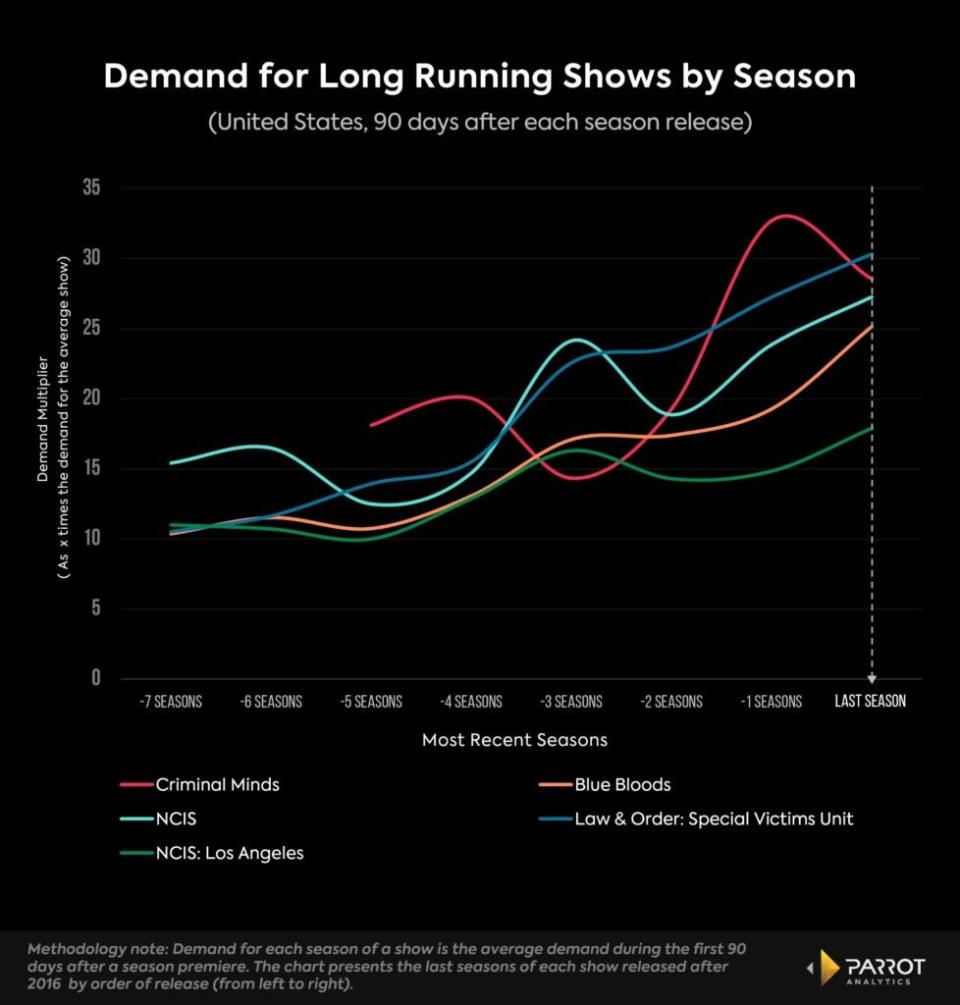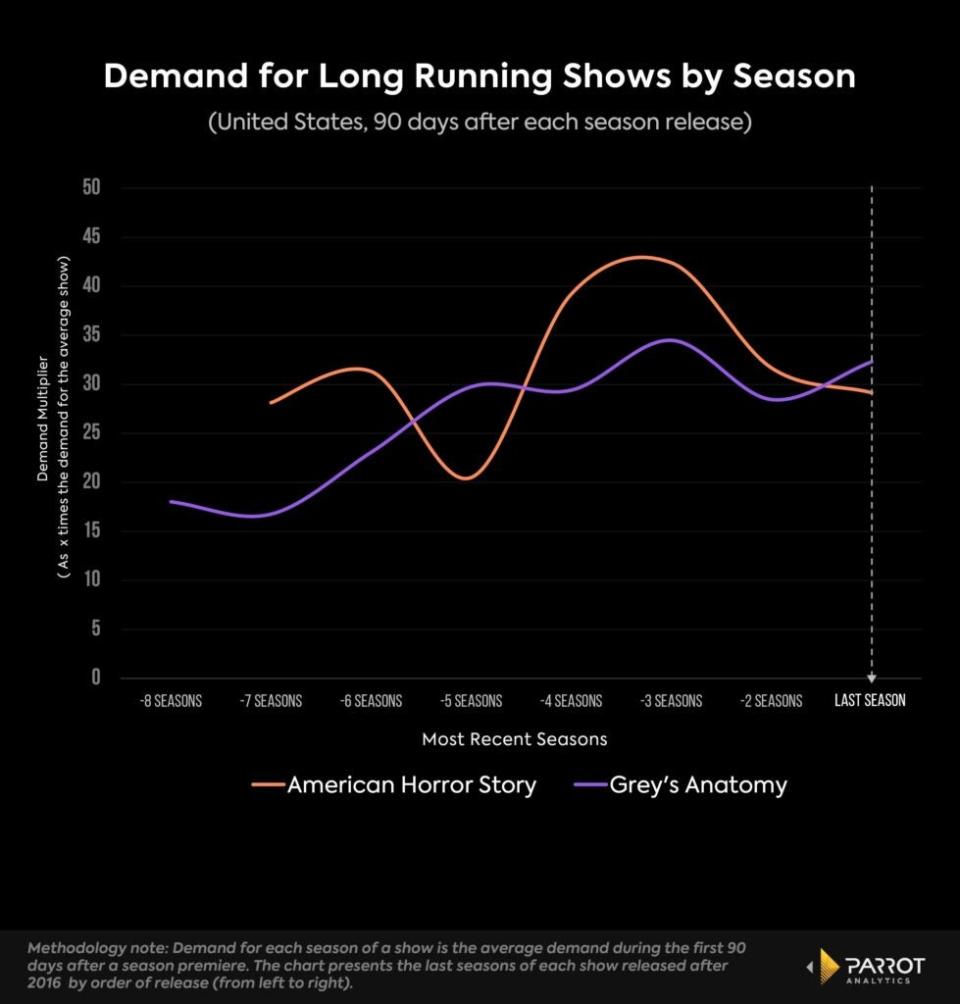Why Shows Like ‘Blue Bloods’ Keep Going and Going | Charts
- Oops!Something went wrong.Please try again later.
Streaming is defined by the new: Billions in spending have funded countless fresh series, and it’s rare for shows to go beyond a few seasons. But amid this influx of material to watch, some long-running TV series from broadcast and cable have continue to capture audiences and even expand their dedicated viewership on streaming. Such long-running shows are not just cultural icons; they invite deeper reflection on viewer tastes, broadcasting strategies and shifts in TV consumption patterns.
Why do these series remain in demand in a constantly flooded market? Is the appeal solely based on nostalgia, or are there deeper reasons that pull viewers back season after season? We used demand data from Parrot Analytics to delve into these questions.

One trend that emerged is the enduring appeal of procedural dramas. Shows like CBS’s “Blue Bloods,” “NCIS” and “NCIS: Los Angeles” and NBC’s “Law and Order: SVU” have seen growing demand with every season. And while the latest season of “Criminal Minds” experienced a slight dip compared to its predecessor, demand for it has surged since its 13th season in 2017.
CBS renewed “Blue Bloods” for a 14th season in March, and “NCIS” is coming back, though its “Los Angeles” spin-off ended this year. NBC renewed “SVU” for a 25th season, making it the longest-running show after “The Simpsons.” And “Criminal Minds” is back with a reboot on Paramount+ after being canceled in 2020: demand data suggests that was a smart decision.
All showcased shows have recorded exceptional demand in their recent seasons, often surpassing the average show’s demand tenfold. In some instances, like the last season of “Law and Order: SVU” and the penultimate season of “Criminal Minds,” demand skyrocketed to levels achieved by a mere 0.2% of shows.
Procedurals achieve longevity for several reasons. They, alongside sitcoms and select unscripted content, serve as ideal casual viewing – what some call “laundry-folding shows.” Viewers can effortlessly tune in without needing continuity since most episodes wrap up their narratives conclusively. This episodic nature, combined with the repeatable format of these shows, fosters longer-term audience engagement. The more viewers watch, the more they connect with recurring characters.

That’s not always the case: Our research identified two shows from different genres whose peak seasons were not their latest releases. “Grey’s Anatomy,” whose full catalog of shows streams on Netflix, saw its zenith during its 17th season in late 2020. Meanwhile, “American Horror Story,” which left Netflix for Hulu in 2022, achieved record demand for its 8th and 9th seasons in 2018 and 2019. Its subsequent seasons couldn’t maintain this momentum. For producers of enduring series, it is crucial to monitor indicators of audience saturation or diminishing enthusiasm.
Daniel Quinaud is a senior data analyst at Parrot Analytics, a WrapPRO partner. For more from Parrot Analytics, visit the Data and Analysis Hub.
The post Why Shows Like ‘Blue Bloods’ Keep Going and Going | Charts appeared first on TheWrap.

